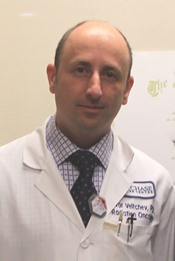Program Information
Applications of Photonuclear Activation of Biological Tissues in Clinical High-Energy X-Ray Beams
I Veltchev*, E Fourkal , C Ma , Fox Chase Cancer Center, Philadelphia, PA
Presentations
SU-D-BRF-1 Sunday 2:05PM - 3:00PM Room: Ballroom FPurpose: The commercial availability of high-energy accelerators opens new therapeutic opportunities for X-rays with energies in excess of 15MV. Three clinical beams (Varian 18MV, Elekta SL25, and Top Grade LA45) were compared by the production of photo-activated positron emitters in five types of biological tissues.
Methods: The activation studies were performed using FLUKA2011 Monte Carlo suite with beam models designed for the three accelerators. Absolute activity density (Bq/ml) distribution in space was obtained from this study. Additionally, the temporal evolution of all activated species was monitored for cooling times up to 30 minutes.
Results: The relative activation contrast of tissue pairs was evaluated for 2Gy of dose at 10cm depth for five tissues (normal, hypoxic, adipose, bone, and lung). In bone the sort-lived isotopes O-15 and P-30 dominated the activity at the early cooling stages. In all tissues 15 minutes post-irradiation the C-11 activity became dominant. Tissues with higher carbon-to-oxygen ratio in their elemental composition became clearly visible in a PET scan at longer cooling times. Radiation treatment of a lung tumor with a hypoxic core was simulated in an anthropomorphic phantom using the LA45 beam model. Increase in the PET counts by more than 50% was measured in the hypoxic volume 15 minutes post-irradiation, demonstrating the benefits of the relative activation contrast concept.
Conclusion: LA45 beam is found to produce measurable activation distribution for 2Gy of dose, suitable for tissue type discrimination studies. Maximum activation contrast of 1.7 between hypoxic and normal tissues was measured in a simulated treatment. The absolute activity density values obtained from these Monte Carlo studies suggest that the window of opportunity for a PET scan exists up to 60 minutes after 2Gy of dose is deposited by 45MV X-ray beam. Lung-to-tissue activation contrast can be explored for treatment QA purposes as well.
Contact Email:


